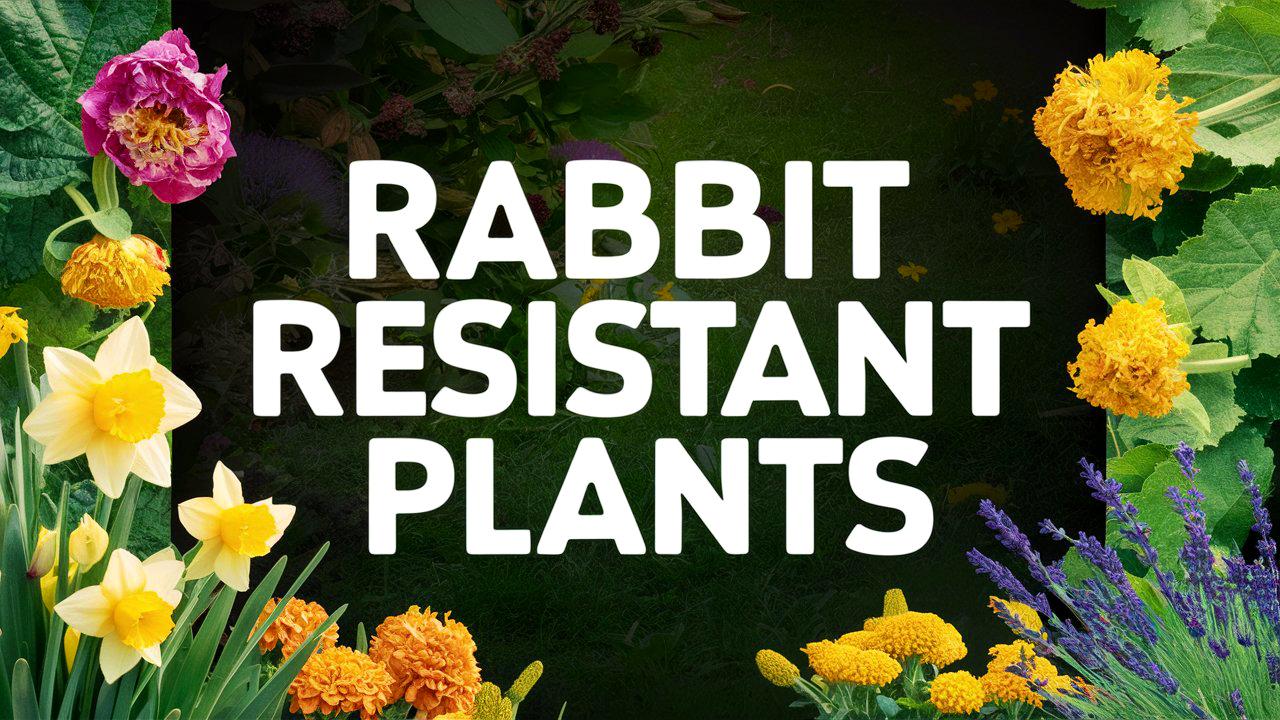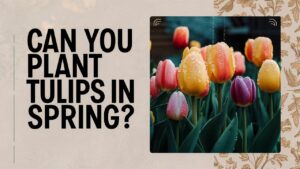Rabbits can be delightful little creatures, but their insatiable appetite can wreak havoc on gardens and landscapes. For gardeners who find their tender plants becoming a buffet for these furry friends, selecting rabbit-resistant plants becomes essential.
In this guide, we will explore a variety of plants that rabbits tend to avoid, allowing you to create a vibrant and resilient garden. Each section will delve into the unique qualities of these plants, their aesthetics, growth conditions, and additional benefits.
Allium
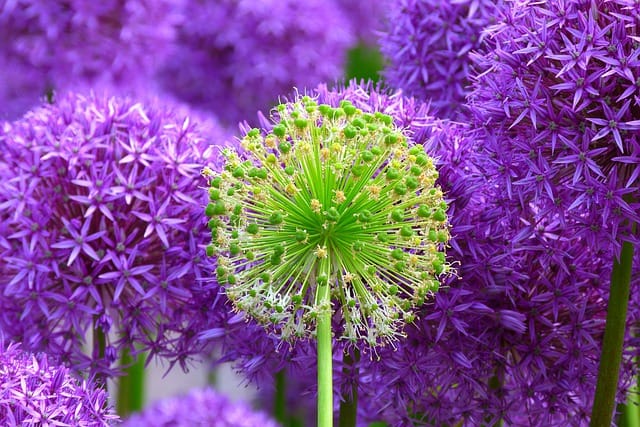
Allium, commonly known as ornamental onions, boasts an impressive array of species, each showcasing bulbous flowers that add charm to any garden. The strong onion-like scent emitted by the bulbs is a significant deterrent to rabbits, who typically shy away from anything that prompts their acute sense of smell.
Allium are easy to grow and thrive in full sun to partial shade, making them versatile additions to various garden beds. They prefer well-drained soil and are often drought-tolerant once established. The large, globe-like flower clusters appear in shades of purple, white, or pink, and blossom in late spring or summer, providing a stunning focal point. Beyond their decorative appeal, Alliums are also known to attract pollinators like bees and butterflies, contributing to the overall health of your garden ecosystem.
Anise Hyssop
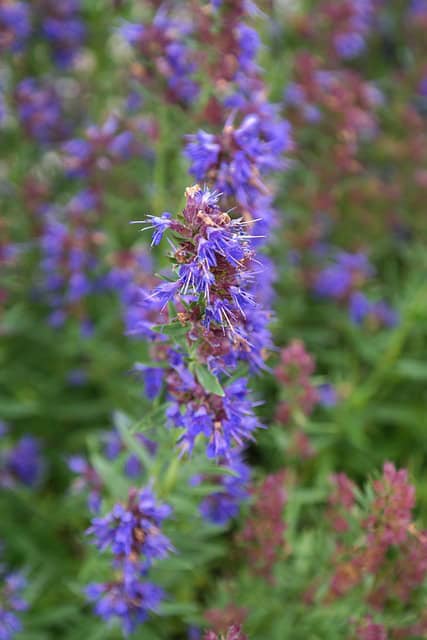
Anise Hyssop (Agastache foeniculum) is a perennial herb cherished for its aromatic foliage and striking purple flowers. This plant emits a distinct anise scent, which not only makes it a pleasant addition to herb gardens but also serves as a natural deterrent for rabbits and other herbivores.
Resilient and hardy, Anise Hyssop thrives in well-drained soil and full sun but can tolerate partial shade. This plant reaches heights of 2-4 feet and blooms from mid-summer to early fall, attracting a plethora of pollinators while offering a striking contrast against other garden plants. The leaves can be harvested for culinary uses, such as in teas or as flavoring for salads, making it a multi-functional addition to your garden.
Bee Balm
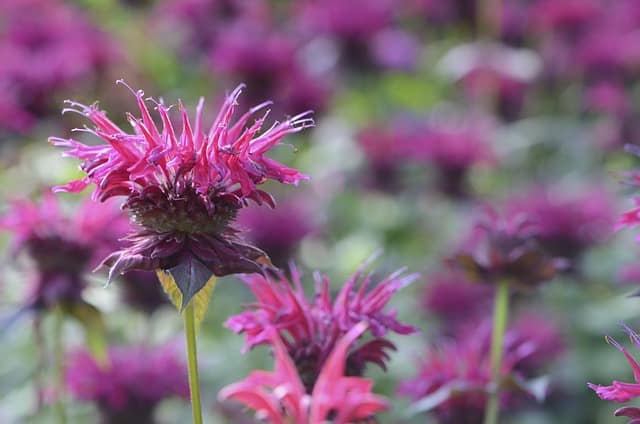
Bee Balm (Monarda didyma) is not just aesthetically pleasing; it’s a powerhouse for pollinator support and a natural rabbit repellent. The aromatic leaves of Bee Balm, characterized by their unique minty scent, deter many animals, including rabbits, from making a meal of your garden.
This perennial can grow between 2-4 feet tall and produces vibrant red, pink, or purple flowers that bloom in the summer. Bee Balm prefers well-drained, rich soil and full sun, though it can adapt to partial shade. Its strong fragrance makes it a favorite among bees, butterflies, and hummingbirds, offering a lively and visually appealing garden space. Additionally, its leaves can be used to create herbal teas, adding to its utility.
Baptisia
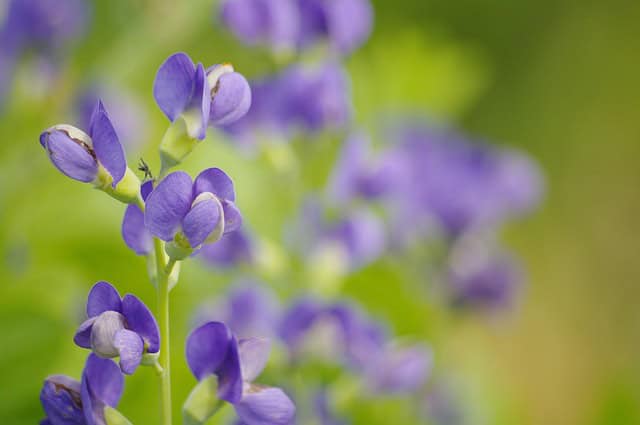
Baptisia, or false indigo, is a remarkable perennial that adds height and vibrancy to garden borders. Emerging in late spring, this plant features spikes of blue or purple flowers that are highly attractive to bumblebees, yet its foliage and stems contain compounds that are unpalatable to rabbits and deer.
Baptisia is exceptionally low-maintenance and tolerates a variety of soil types, thriving in full sun or light shade. Once established, it is drought-tolerant, contributing to its status as a resilient garden choice. The striking silhouette and abundance of long-lasting flowers make Baptisia a standout in landscape design. As the plant matures, it develops a shrubby form that adds texture and structure to the garden, making it an excellent choice for those seeking aesthetic and functional benefits.
Catmint
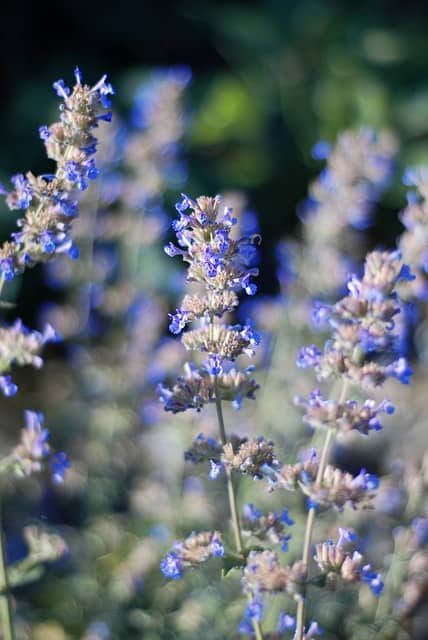
Catmint (Nepeta) is a charming and resilient perennial admired for its aromatic gray-green foliage and striking blue-purple flowers. While it appeals greatly to feline friends due to its name, this plant’s fragrance largely repels rabbits. The oils present in its leaves deter these critters, making it a perfect fit for a garden that must withstand the attention of hungry wildlife.
Catmint thrives in full sun and well-drained soil, reaching heights of 12 to 30 inches. It blooms from late spring through early summer, providing long-lasting color and attracting pollinators. Additionally, its drought resistance once established makes it an eco-friendly choice, demanding less water than many other garden plants. As a bonus, Catmint can also be included in culinary contexts, as its leaves can enhance a variety of dishes.
Daffodil
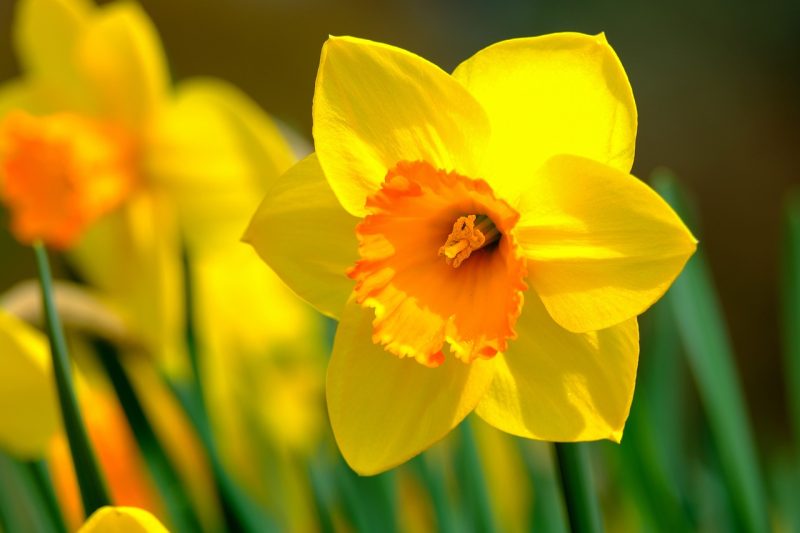
Daffodils (Narcissus) are well-known for their bright, cheerful blooms that herald the arrival of spring. Beyond their beauty, daffodils offer garden protection through their toxicity. All parts of the daffodil plant contain alkaloids that can harm rabbits and other animals if ingested, making them a foolproof option for any garden struggling with these pests.
Daffodils thrive in a range of soil types, provided they have good drainage, and prefer full to partial sun. These bulbs are typically planted in the fall, ensuring a colorful display in early spring. Their vibrant yellow, white, or orange flowers can brighten any landscape, and they require minimal care once established. Daffodils are also a favorite among pollinators, though their toxicity prevents them from being a target for browsing wildlife.
Lamb’s Ear
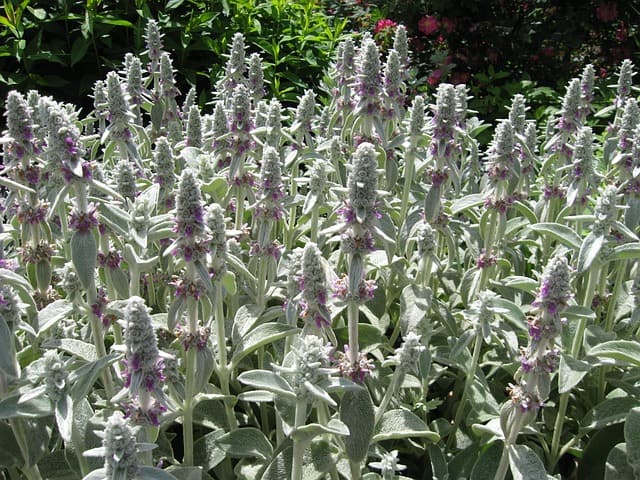
Lamb’s Ear (Stachys byzantina) is an enchanting perennial, boasting soft, velvety leaves that resemble the coat of a lamb. The thick foliage not only creates an interesting texture in gardens but also serves as a rabbit deterrent due to its rough, hairy surface.
This plant flourishes in full sun and well-drained soils, making it adaptable to various garden conditions. Lamb’s Ear can spread quickly but is easily managed, offering a low-growing ground cover that can help suppress weeds. It produces tall spikes of purple flowers in late spring, adding vertical interest to the garden. In addition to its ornamental value, the foliage can be a sensory delight for visitors, encouraging touch and exploration.
Lavender
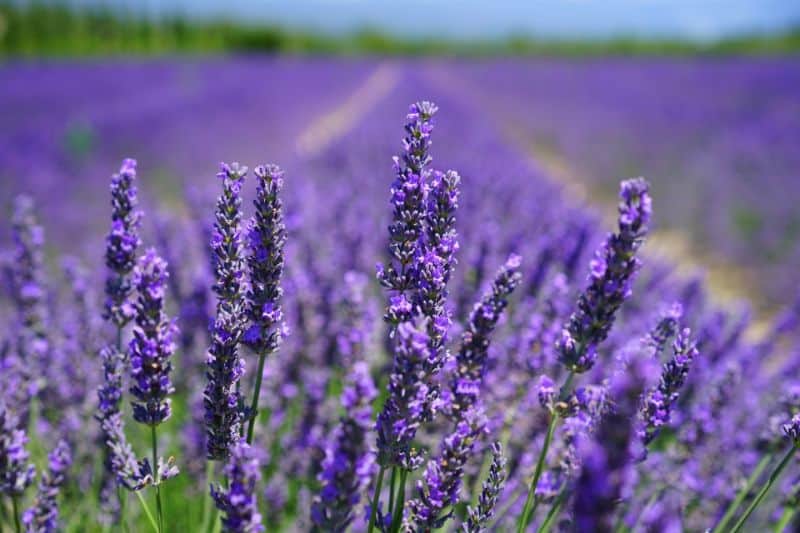
Lavender (Lavandula) is a beloved perennial known for its aromatic flowers and versatile uses. The fragrance of lavender is a natural deterrent for rabbits and many other garden pests. Its beautiful purple flowers attract beneficial insects while simultaneously repelling those that could harm your plants.
Lavender thrives in well-drained, sandy soil and requires full sun to reach its full potential. Once established, it is drought-tolerant, making it a fantastic choice for sustainable gardening practices. Gardeners can enjoy its fragrant blooms not only for their beauty but also for their culinary uses and in homemade sachets, oils, and even skincare products. The plant’s natural pest-repelling qualities further enhance its value in organic gardening methods.
Salvia
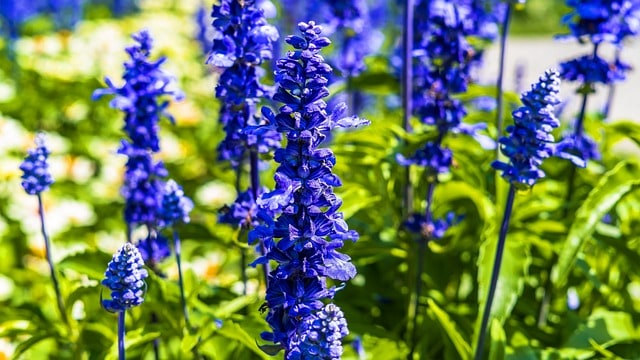
Salvia, or sage, encompasses a broad family of flowering plants with vivid blooms and aromatic leaves that rabbits find unappealing. This perennial herb is known for its stunning spikes of purple, blue, or red flowers that attract bees and hummingbirds, making it an integral part of a pollinator-friendly garden.
Salvia is adaptable and can thrive in various soil types, as long as it has good drainage. It prefers full sun but can tolerate some shade. Most varieties bloom from late spring through early fall, offering extended color. The leaves have culinary applications in cooking, and when dried, they can create herbal teas or seasonings. Their resilience and minimal care requirements, coupled with their beauty, make them an excellent choice for gardeners looking to create a thriving landscape while discouraging rabbits.
Joe Pye Weed
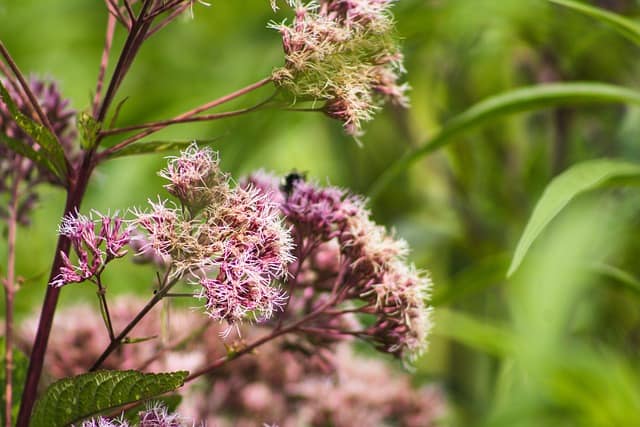
Joe Pye Weed (Eutrochium) is a towering perennial that can reach heights of 5-7 feet, making it a remarkable addition to any garden, particularly as a background plant. Its sturdy stems support clusters of small, fluffy flowers that bloom in shades of pink or purple, attracting a plethora of butterflies and other pollinators.
The pungent aroma of Joe Pye Weed is generally unappealing to rabbits, providing an additional layer of defense for your garden. This plant thrives in moist soils and tolerates various conditions, including partial shade. Beyond its beauty, Joe Pye Weed symbolizes the importance of biodiversity, supporting pollinator populations while offering a visually striking component to landscape designs.
Milkweed
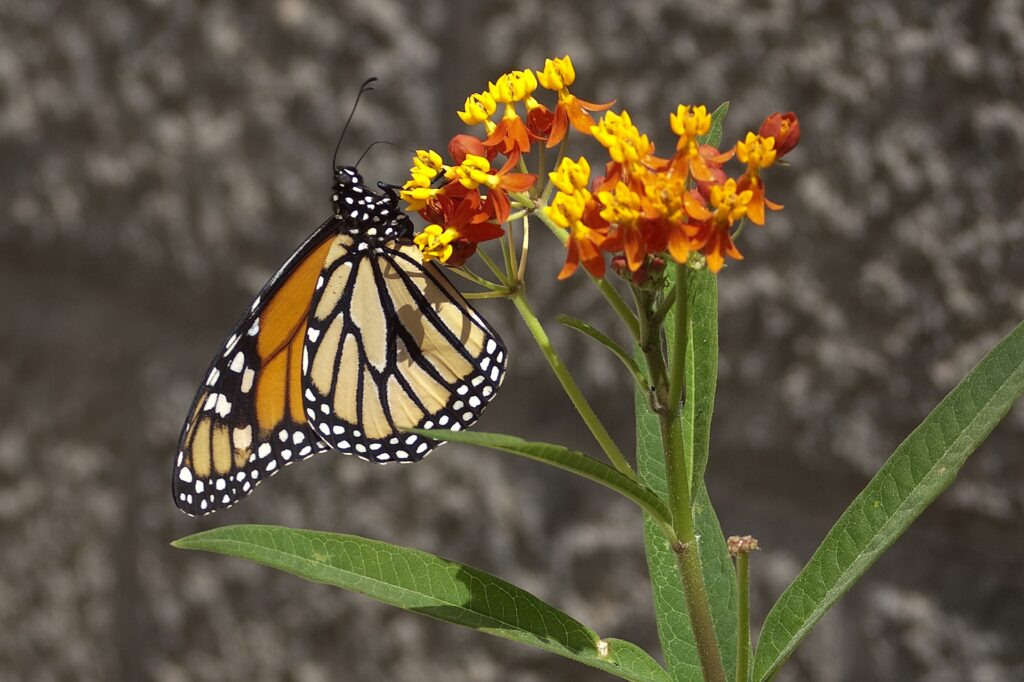
Milkweed (Asclepias) is a critical plant for supporting monarch butterflies, as it is the primary food source for caterpillars. Beyond its crucial ecological role, its milky sap makes it less palatable to many herbivores, including rabbits.
Milkweed prefers sunny spots with well-drained soil and is relatively low-maintenance once established. The plant produces clusters of pink or orange flowers that bloom throughout the summer, serving as a magnet for pollinators, particularly butterflies. In addition to supporting wildlife, Milkweed’s deep roots can help prevent erosion, making it an environmental choice for sustainable gardening.
Red Hot Poker
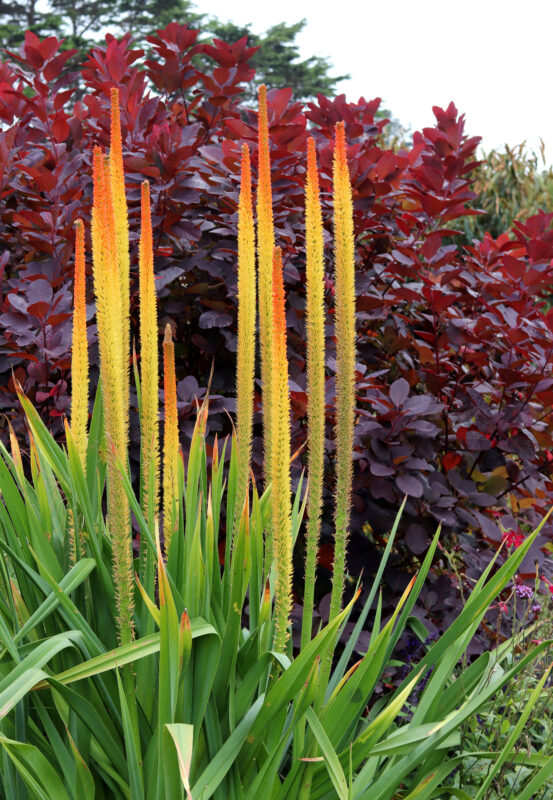
The Red Hot Poker (Kniphofia) is an exotic perennial that provides vibrant hues of orange, red, and yellow, resembling torches. This striking appearance can serve as a focal point in any garden setting while its tough, fibrous leaves discourage rabbits from approaching the plant.
Red Hot Poker thrives in well-drained soil and full sunlight. It is remarkably drought-tolerant once established, making it a hardy choice for low-maintenance gardens. The plant typically blooms from late spring to early fall, enhancing the fiery tonal palette of the landscape while attracting pollinators like hummingbirds and bees. Its resilience and unique artistic presence render it a fantastic rabbit-resistant option.
Larkspurs
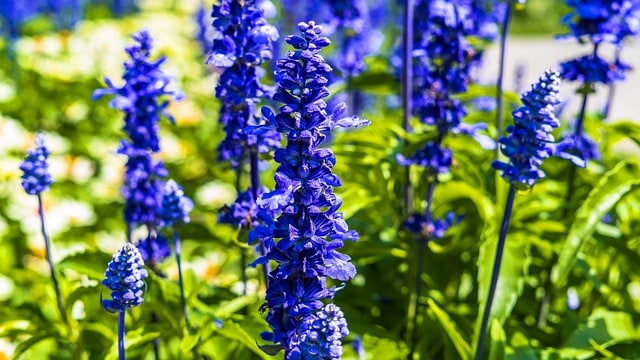
Larkspurs (Delphinium) are enchanting plants, known for their tall spikes adorned with clusters of flowers that range from blue to lavender to white. While their charm captivates garden enthusiasts, rabbits tend to avoid these plants due to their toxicity.
Larkspurs prefer rich, well-drained soil and do best in full sun. They typically bloom in summer, offering dramatic vertical interest to flower gardens. Although they require a bit of care, including staking to support their tall flowers, the blooms are well worth the effort for their beauty and the natural pest resistance they provide. Additionally, Larkspurs can attract butterflies, further enhancing the garden’s biodiversity.
Ferns
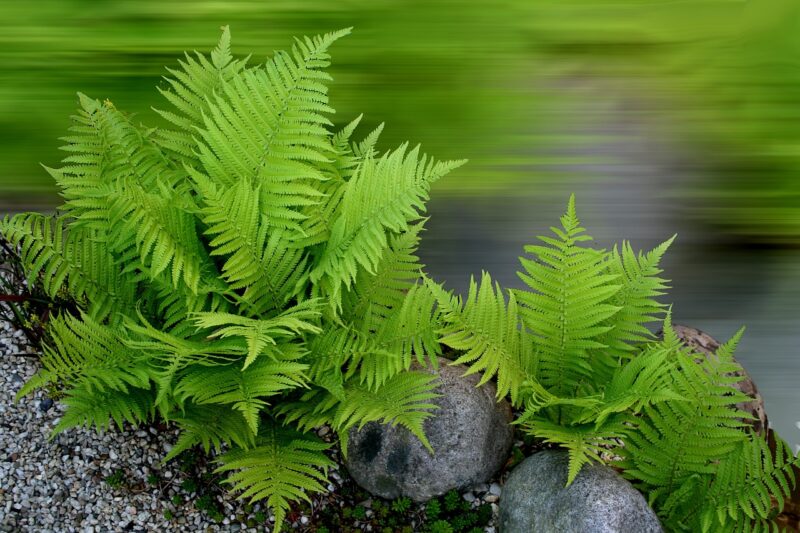
Ferns are often overlooked in favor of more traditionally flowering plants, but their lush and diverse foliage provides a soft texture to any garden. Many species of ferns are also rabbit-resistant, primarily due to their woodsy and sometimes unpalatable composition.
Ferns prefer shady environments, making them ideal companions in woodland gardens or shaded areas. They thrive in moist, well-draining soil. The intricate leaves of ferns come in various shapes and sizes, providing unique visual interest. Being low-maintenance and hardy, they can enhance biodiversity in the garden while contributing to a rabbit-resistant environment.
Ornamental Grasses
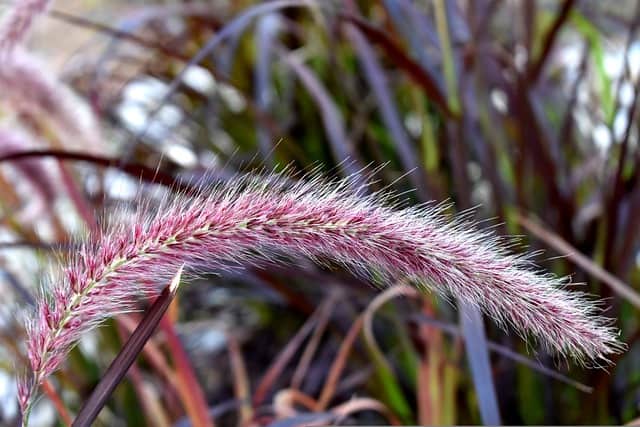
Ornamental grasses offer movement, texture, and structure to garden designs. Many varieties are hardy and drought-tolerant, thriving in a wide range of soil conditions. Their growth habits and tough foliage often dissuade rabbits from invading these areas.
Ornamental grasses such as Miscanthus, Panicum, and Calamagrostis can be incorporated into nearly any garden style, from formal to informal designs. They typically bloom in late summer to fall, producing flower plumes that add elegance and interest to the landscape. The diverse heights and colors available ensure that there is an ornamental grass suited for every garden project.
Lady’s-Mantle
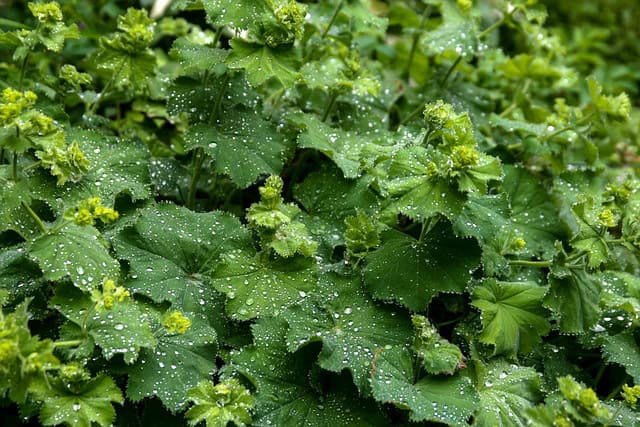
Lady’s-Mantle (Alchemilla mollis) is a charming perennial known for its soft, rounded leaves and delicate yellow-green flowers. While its aesthetic appeal enhances garden designs, its slightly bitter taste provides rabbits with little incentive to munch on its foliage due to its natural deterrent properties.
This plant prefers well-drained soil and partial shade, making it adept at filling in shady garden spots. Once established, Lady’s-Mantle requires minimal care and produces beautiful foliage that can retain dew drops in the morning, creating a shimmering effect. The plant blooms in late spring to early summer, adding to its ornamental value.
Wild Ginger
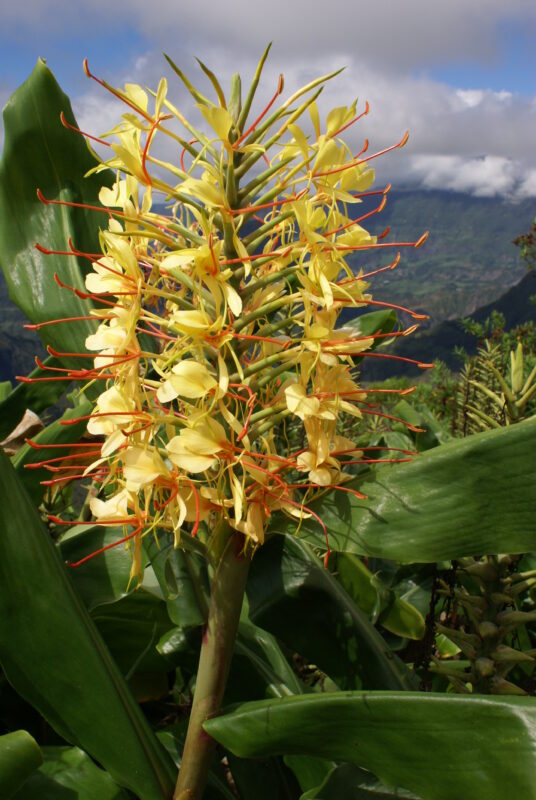
Wild Ginger (Asarum canadense) is a low-growing perennial with heart-shaped leaves and unusual bell-shaped flowers hidden beneath its foliage. This understated beauty can thrive in shady areas, making it an ideal ground cover for shaded garden spaces.
The aroma of wild ginger is often unappealing to rabbits, helping this plant hold its ground against wildlife. It prefers damp woods and well-drained soil, and once established, it spreads slowly, creating a lush carpet of green. Wild Ginger also supports local wildlife, aiding in the creation of a balanced ecosystem in your garden.
Yucca
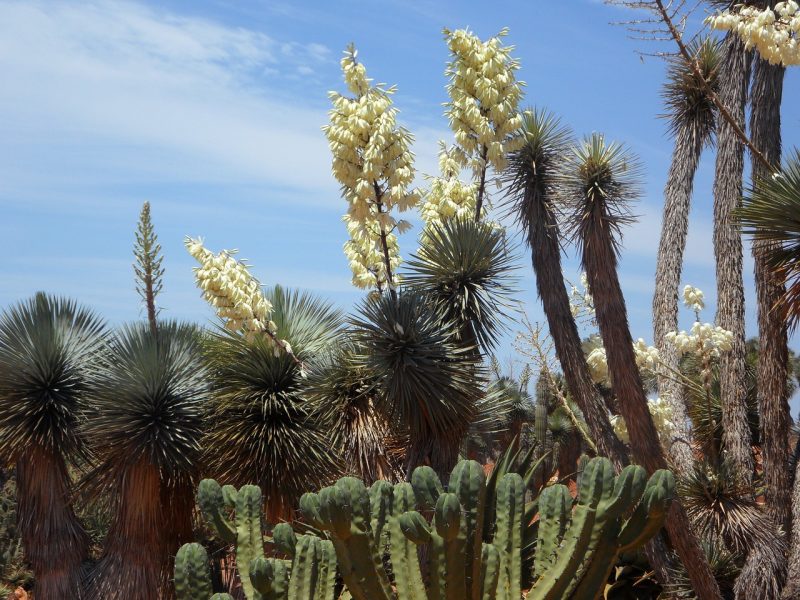
Yucca is a striking, low-maintenance plant characterized by its sword-like leaves and tall, showy flower spikes. The sharp foliage and density discourage rabbits from getting too close, making Yucca a solid choice for rabbit-resistant landscaping.
Yucca thrives in arid, sandy soil and prefers full sun, making it ideal for drought-tolerant gardens. The creamy white flower spikes that emerge in summer provide a dramatic contrast to the sharpness of the leaves. In addition to its resilience, the plant is often used in xeriscaping and can contribute to a sustainable garden design.
Sedum
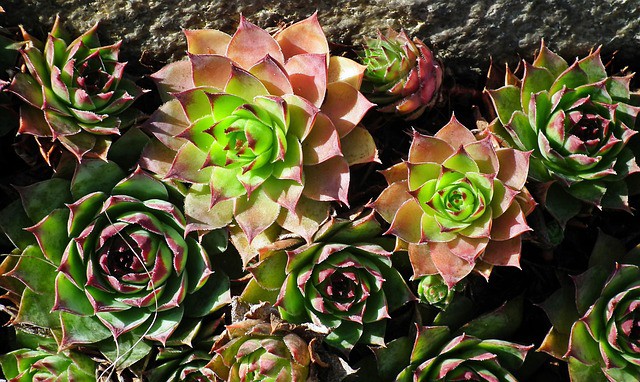
Sedum, or stonecrop, is a diverse group of succulent plants known for its fleshy foliage and vibrant flowers. Many varieties exhibit a tendency to deter rabbits due to their thick leaves and lower nutritional value. Furthermore, their water-storing abilities make them ideal for low-water gardens.
Sedum is adaptable to various growing conditions, thriving in well-drained soil and full sun, making it suitable for rock gardens and ground covers. These hardy plants usually bloom in late summer to early fall, offering colorful clusters of flowers that attract pollinators while remaining largely unscathed by browsing rabbits. Their low maintenance and ability to thrive in poor soil conditions make them a brilliant option for any gardener looking for beautiful, rabbit-resistant plants.
Snapdragons
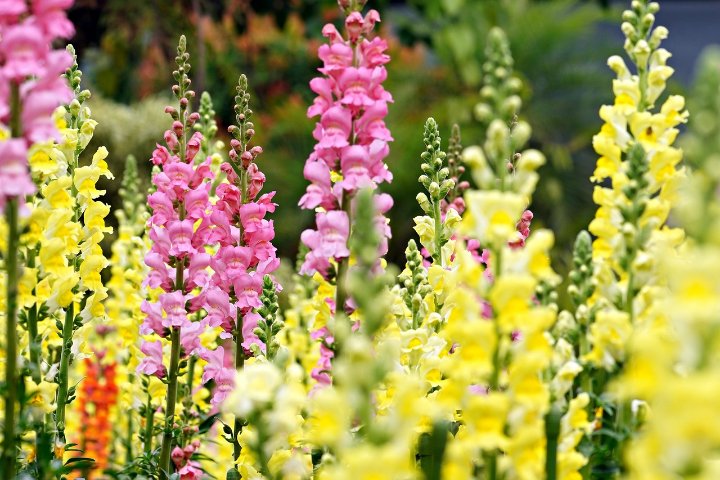
Snapdragons (Antirrhinum majus) are vibrant annuals known for their unique, dragon-shaped flowers that come in an array of colors. Their strong aroma can sometimes deter rabbits, while the colorful blooms add joy and vitality to gardens.
Snapdragons prefer well-drained soil and will thrive in full sun to partial shade. Regular deadheading helps to maintain their flowering throughout the growing season, and they can provide visual interest in garden borders or mixed plantings. The broad selection of colors and forms makes Snapdragons great companions to other plants, enhancing the overall aesthetic while discouraging rabbits.
Tomatoes
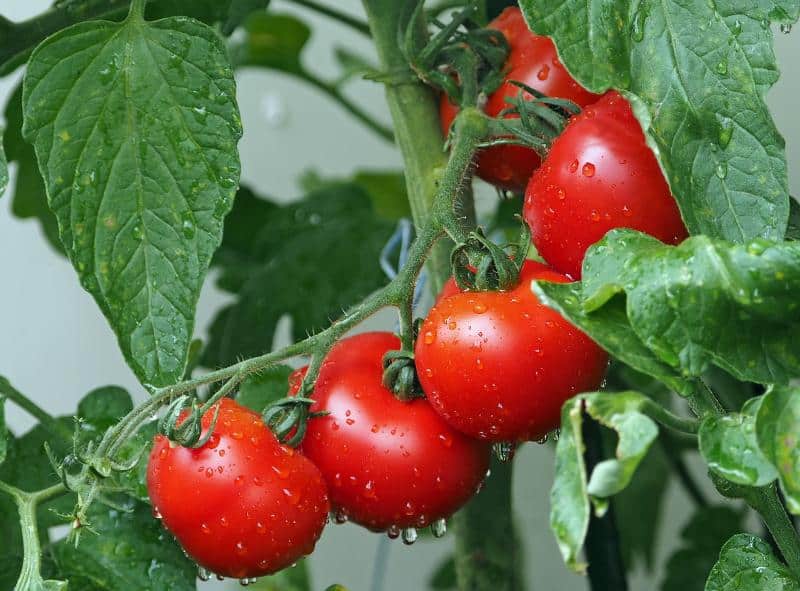
Tomatoes (Solanum lycopersicum) are not only a staple in many gardens but also exhibit traits that make them less appealing to rabbits. The strong odors of the foliage and the unique texture of tomato leaves tend to deter these furry intruders. There’s a common belief that rabbits shy away from biting into young tomato plants, making them a suitable choice for gardeners facing the challenge of keeping these pests at bay.
Tomatoes thrive in warm, sunny environments with well-drained soil, and they love deep watering. Depending on the variety, tomatoes can be grown in containers, raised beds, or directly in the ground. They require support as they grow, which can be provided through cages or stakes. The wide availability of varieties—ranging from cherry to beefsteak—enables gardeners to select types that best suit their culinary needs. Beyond their rabbit-resistant qualities, tomatoes offer significant nutritional value and can be harvested for delicious, fresh meals throughout the growing season.
Columbine
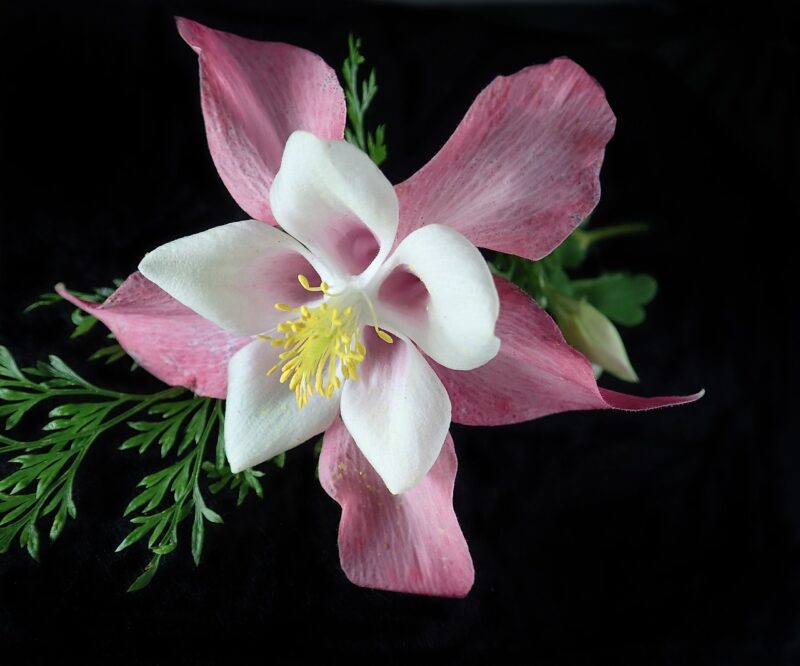
Columbine (Aquilegia) is a perennial flower that enchants with its delicate, bell-shaped blooms in a wide range of colors, from blues and purples to reds and whites. These flowers’ complex structures are often unappealing to rabbits due to their intensity and somewhat bitter flavor, serving as a natural deterrent.
Columbines prefer partial shade and thrive in moist, well-drained soil, making them ideal for woodland gardens or the edges of shrubs. They bloom in late spring to early summer, attracting hummingbirds and bees while providing a soft, romantic touch to any landscape design. With their enchanting beauty and minimal maintenance requirements, they are a perfect choice for adding color to gardens while keeping rabbits at bay.
Coreopsis
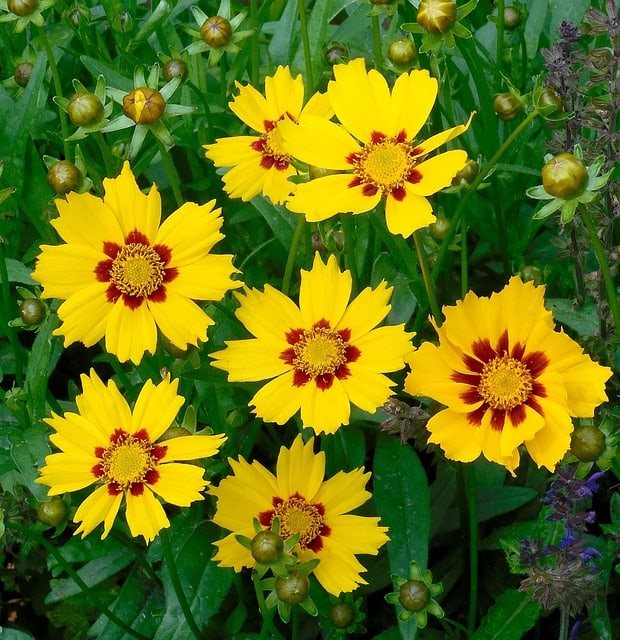
Coreopsis, or tickseed, is a hardy perennial known for its cheerful, yellow flowers that brighten up gardens from early summer to fall. The plant’s slightly bitter-tasting foliage is not favored by rabbits, making it a noteworthy addition to any rabbit-resistant plant list.
Coreopsis is adaptable to various soil types but flourishes in well-draining, average soil under full sun. The upright growth habit and prolific blooming character of this plant enhance flower beds, borders, and wildflower gardens. Coreopsis varieties often produce an abundance of flowers, which makes them excellent for cutting gardens. Their ability to attract pollinators while remaining largely untouched by rabbits renders them a win-win for gardeners.
Zinnias
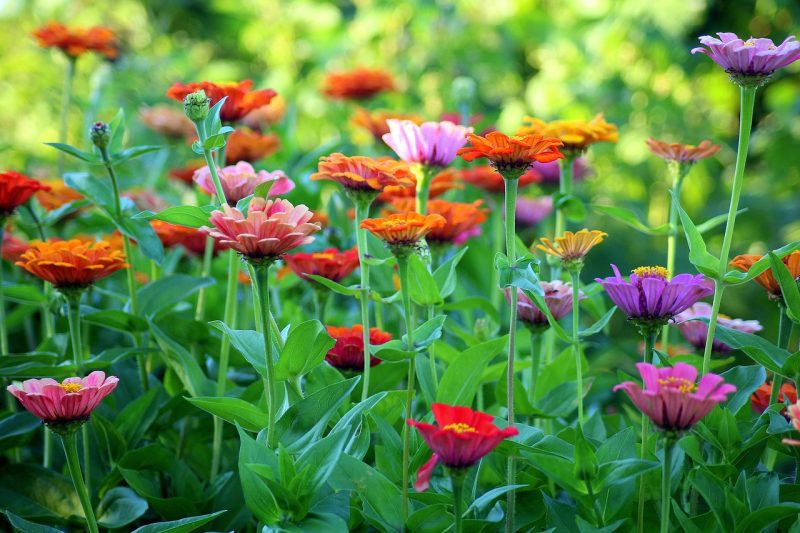
Zinnias (Zinnia elegans) are vibrant annual flowers that bring a splash of color to gardens and are beloved for their resilience. Their slightly rough leaves and strong fragrance often make them less approachable for rabbits, which typically prefer softer foliage.
These plants thrive in full sun and well-drained soil and are particularly tolerant of heat and drought, making them ideal for summer gardens. Zinnias come in a vivid palette of colors, and they bloom profusely from late spring until the first frost. Their adaptability and ease of care make them popular choices among gardeners, and they are also known to attract a wide variety of butterflies and beneficial insects, enriching the garden ecosystem further.
Spider Flower

The Spider Flower (Cleome hassleriana) is a unique annual ornament that offers both beauty and resilience in the face of rabbit visitors. They produce tall, spiky flowers with long, spindly petals that resemble the legs of a spider, hence their name. The strong, grassy aroma emitted by the plant helps to lower its chances of being eaten by rabbits, making it a good candidate for a rabbit-resistant garden.
Spider Flowers enjoy full sun and thrive in well-drained soil, showing off their attractive blooms throughout the summer until early fall. Their height and structure create an interesting vertical element in flower beds and borders. Furthermore, their ability to attract pollinators like bees and hummingbirds matches the aesthetic value with ecological benefit, making them a great addition to any garden.
Verbena
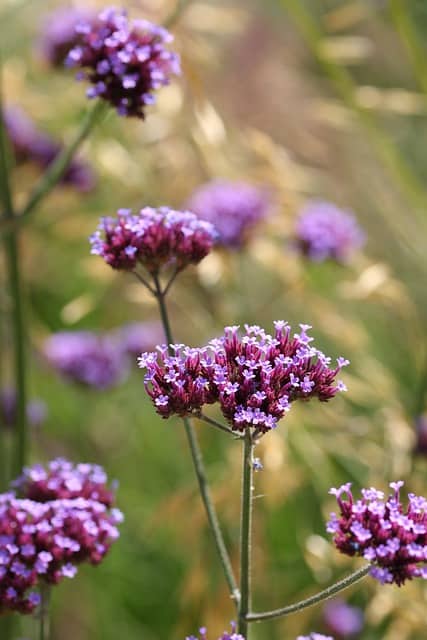
Verbena is a versatile flowering plant adored for its long-lasting blooms and vibrant colors. This hardy perennial is often overlooked for its rabbit-resistant qualities, primarily due to the tough, aromatic foliage that rabbits typically avoid.
Verbena prefers full sun and well-drained soils, excelling as ground cover or in container gardens. Its long blooming season stretches from late spring to fall, providing nonstop color and drama. The clusters of small flowers are particularly attractive to pollinators, including butterflies and bees. With their low-care requirements and ability to spread and fill in garden spaces, Verbenas make lovely, rabbit-resistant additions.
Foxgloves
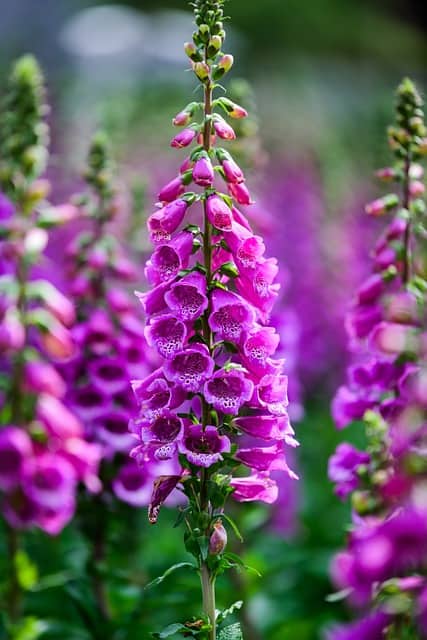
Foxgloves (Digitalis) are renowned for their tall, elegant spikes of tubular flowers, making them a stunning addition to any garden. Familiar for their enchanting appearance, these biennial plants contain compounds that are toxic to rabbits if ingested, providing a natural defense against these garden invaders.
Foxgloves thrive in partial to full shade and prefer well-drained, rich soil. They typically bloom from late spring to early summer and can grow impressively tall, often reaching heights of 3-5 feet. They are fantastic options for shaded areas or as part of mixed borders where height is needed. While beautiful, they should be planted with caution if pets or small children are around due to their toxicity.
Peony
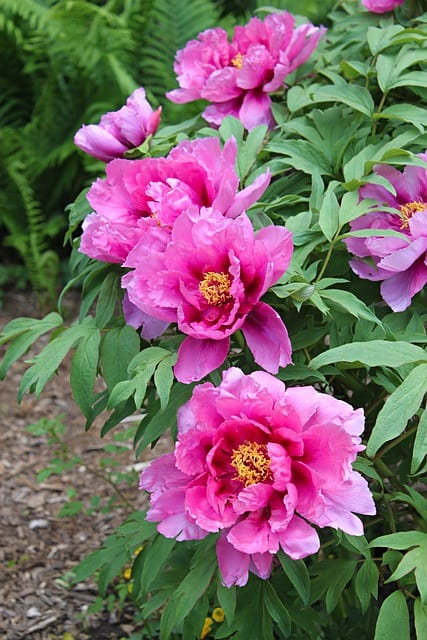
Peonies (Paeonia) are cherished for their large, fragrant blooms that signify the arrival of warmer weather. These perennial plants can be quite formidable against rabbits, as the thick, heavy petals and robust stems deter these pests.
Peonies thrive in full sun with well-drained soil enriched with organic matter. They require minimal care once established, making them a favorite among gardeners. Flowering will typically occur in late spring to early summer, and the blooms may last for several weeks. The flowers come in various colors, including white, pink, and red, providing sumptuous beauty in any garden landscape. Furthermore, peonies can last for generations, further establishing them as a worthwhile long-term investment in gardening.
Lungwort
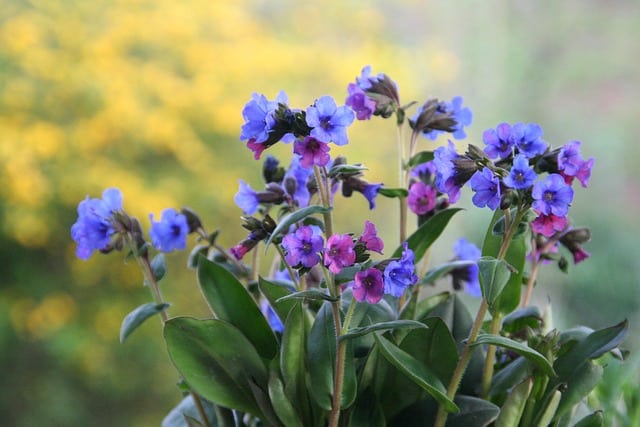
Lungwort (Pulmonaria) is a shade-loving perennial known for its attractive spotted leaves and clusters of flowers that can range from blue to pink. These plants are often avoided by rabbits due to their rough texture and slightly bitter taste.
Lungwort thrives in moist, well-drained, rich soils and is perfect for woodland gardens or shaded areas. It erupts in bloom in early spring, providing colorful, vibrant patches when many other plants are still waking from their dormant state. Additionally, they are known for their early pollination support, drawing in bees when few other flowers are available. This blend of aesthetics and ecological benefits makes lungwort an excellent choice in the efforts to deter rabbits.
Monkshood
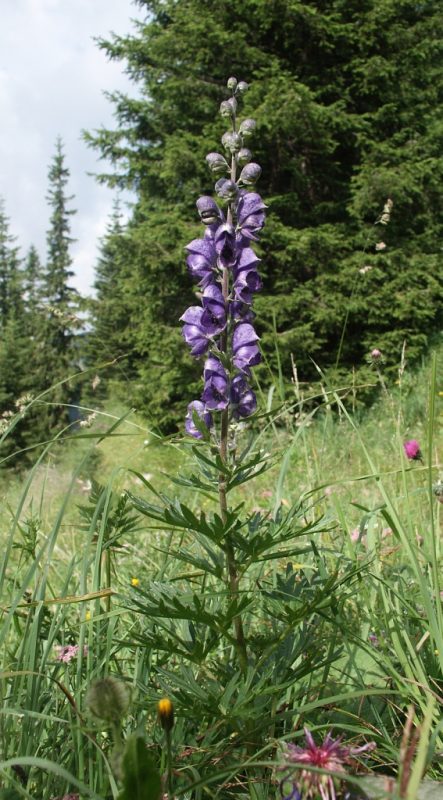
Monkshood (Aconitum) is an intriguing perennial recognized for its unique, hooded flowers that come predominantly in shades of blue and purple. This dramatic flower’s toxicity serves as a natural repellent for rabbits, making it effective in managing pest activity in gardens.
Monkshood is most suited for partial shade and well-drained, moist soils, preferring cooler conditions. It typically blooms in mid to late summer, adding elegance and height to garden beds. While beautiful, gardeners should be cautious, as all parts of monkshood are toxic if ingested. Its striking appearance and ability to flourish in shaded gardens make it a notable option for rabbit-resistant landscaping.
Hellebore
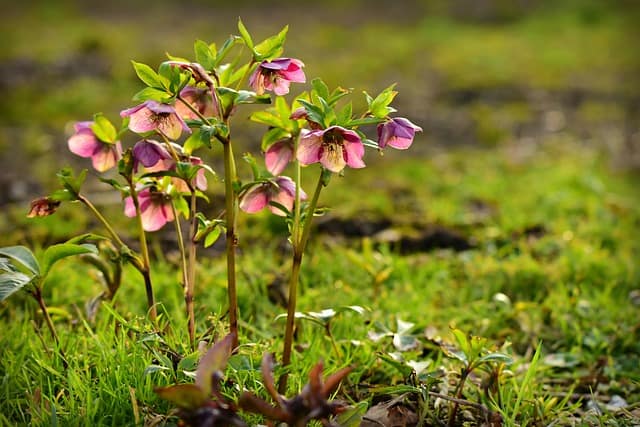
Hellebore, also known as the Lenten Rose, is a perennial that blooms in late winter to early spring, offering much-needed color during the colder months. Its leathery leaves and toxic properties are unattractive to rabbits, helping to keep it safe from hungry browsers.
Hellebores prefer well-drained soil and partial to full shade, making them ideal for woodland or shaded gardens. They come in various colors, including white, pink, and purple varieties, providing a soothing backdrop yet stunning visuals. They are known for their resilience and ability to thrive in less-than-ideal conditions, such as clay soil, while standing up against the incursion of rabbits.
Astilbe
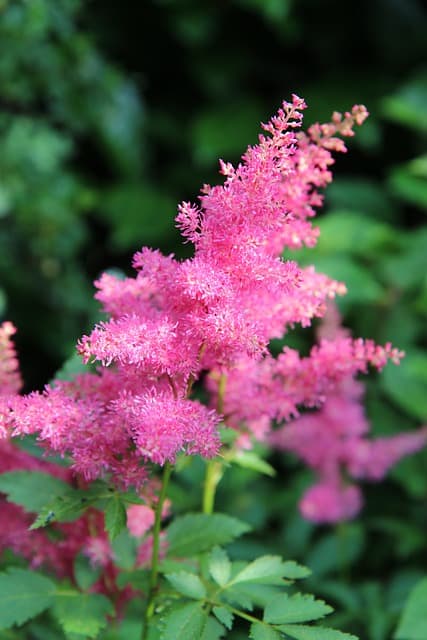
Astilbe is a perennial plant known for its fluffy, plume-like flower clusters that bloom in various colors from white to pink to red. The dense foliage and fibrous texture of Astilbe deter rabbits, making it an excellent choice for rabbit-resistant gardens.
This plant thrives in moist, rich soils and partial shade, often found along the edges of woodlands or in bog gardens. Astilbe blooms from mid-summer to early fall and brings a touch of elegance and texture to any garden. It’s particularly beloved for its ability to attract butterflies while providing a lush, colorful ground cover, making it a favorite among those looking to create beautiful and wildlife-friendly spaces.
Geraniums
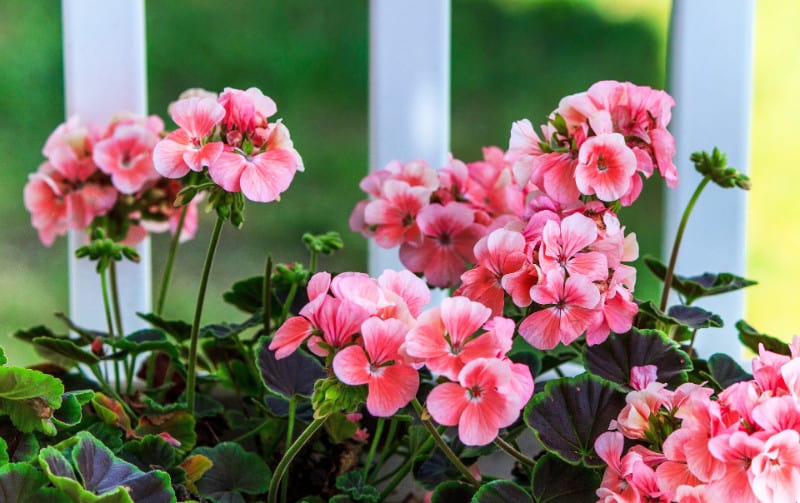
Geraniums (Geranium) are versatile perennial plants that can provide an array of colors and textures throughout the growing season. Their aromatic foliage is often unappealing to rabbits, which tend to steer clear of the strong sense that these plants give off. Thus, they make an attractive, rabbit-resistant option in flower beds and borders.
Geraniums prefer well-drained soil and thrive in full sun to partial shade. They bloom during the summer with a variety of flower colors including purple, white, and pink. Besides their ornamental value, many types of geraniums are drought-tolerant once established, reducing maintenance efforts for gardeners. They adapt well to various garden environments, making them a popular choice for both novice and experienced horticulturists.
Marigolds
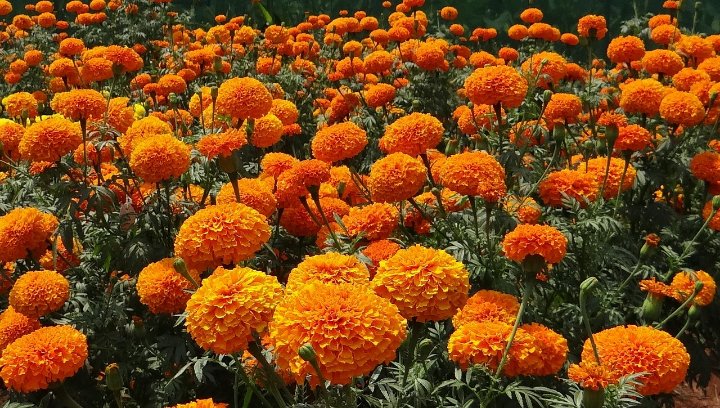
Marigolds (Tagetes) are vibrant annual flowers often celebrated for their cheerful yellow and orange blossoms. Their distinct fragrance is a natural deterrent for many pests, including rabbits, making them a favored choice among organic gardeners.
Marigolds are exceptionally easy to cultivate, thriving in well-draining soil and full sun. They bloom profusely from spring until frost, offering a continuous display of color. These plants are particularly beneficial when planted alongside vegetables, as they help repel nematodes and other garden pests. Their pest-repelling properties, coupled with their striking appearance, make marigolds a perfect companion plant for both aesthetic and practical gardening benefits.
Ornamental Evergreens
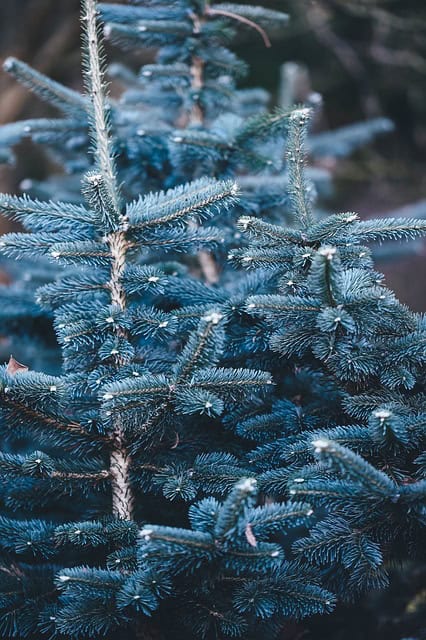
Ornamental evergreens are essential plants for any garden design, providing year-round structure and greenery. Many evergreens, like junipers and spruces, are often avoided by rabbits due to their dense foliage and sharp needles, making them ideal choices for rabbit-resistant landscapes.
These plants are incredibly versatile, thriving in various soil types and tolerating a wide range of climates and exposures. They can serve as natural privacy screens, tall hedges, or focal points in garden designs. Ornamental evergreens retain their visual appeal throughout all seasons while ensuring that your landscape maintains its aesthetics, even when other plants have faded.
Goldenrod
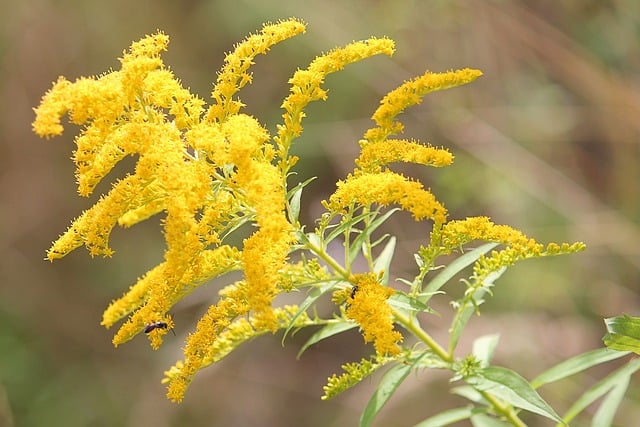
Goldenrod (Solidago) is a native perennial known for its bright yellow blooms that light up gardens in late summer and fall. It serves a dual purpose as a pollinator magnet and a rabbit-resistant plant, as the plant’s bitter taste keeps rabbits at bay.
Goldenrod thrives in full sun and well-drained soil, making it low-maintenance and adaptable. It typically grows to heights of 2-5 feet, creating a bold display in native gardens and wildflower plantings. Its ability to attract numerous pollinators, particularly at a time when many other flowers have faded, enhances garden biodiversity. Moreover, it can provide vital habitat and food sources for wildlife, making it a beneficial choice for an eco-friendly garden.
Rhododendron
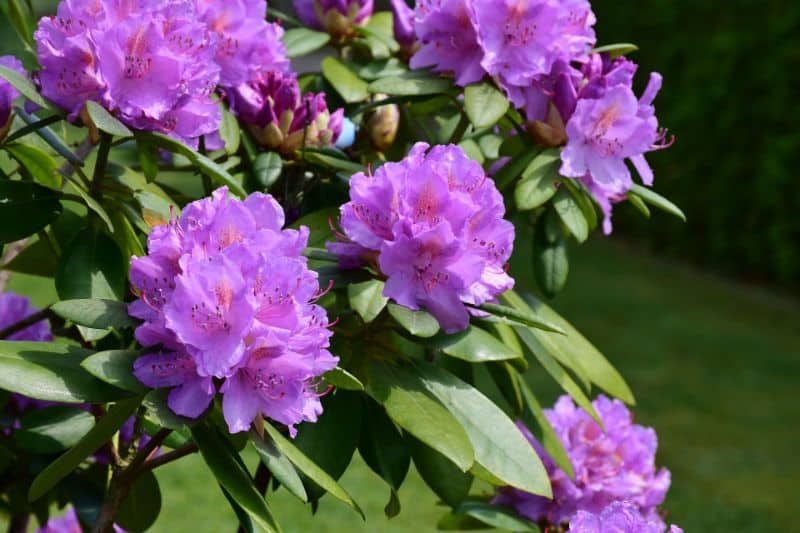
Rhododendrons offer some of the most visually stunning blooms in spring, showcasing their large, showy flowers in various colors. These robust shrubs possess a natural toxicity that deters rabbits, making them a welcomed addition to gardens facing pest challenges.
Rhododendrons thrive in acidic, well-draining soils with partial to full shade. They require some protection from the harsh afternoon sun, but when planted in the right conditions, they can grow into substantial flowering shrubs. Blooming in spring, they also provide year-round evergreen foliage, creating interest and structure to garden landscapes. The resilience and stunning floral displays of Rhododendrons ensure their popularity among gardeners looking to create beautiful and robust environments.
Peppers
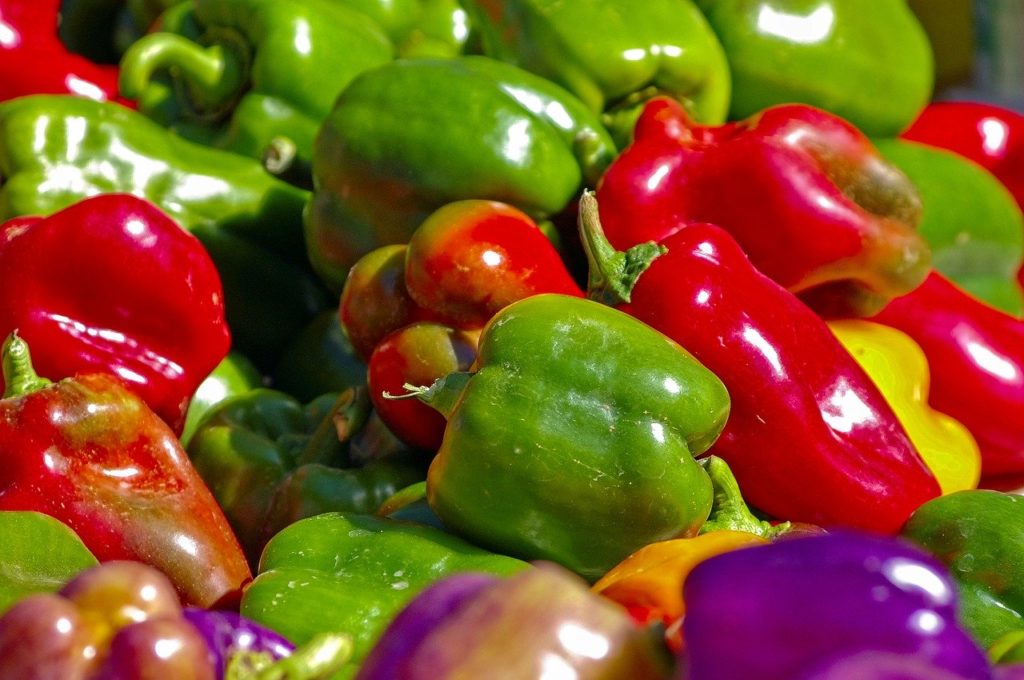
Sweet and ornamental peppers (Capsicum) can be more than just culinary staples; they can also be included in gardens as rabbit-resistant choices. The pungent scent and the capsaicin present in peppers can deter rabbits from approaching these plants, making them an intriguing option for pest-sensitive areas.
Peppers typically thrive in warm weather and require full sun and well-drained soil. They can be grown in various settings, from garden beds to containers, providing both beauty and function. As these plants bear colorful fruits that are not only appealing in appearance but also essential in kitchens, they serve a dual purpose, appealing to culinary enthusiasts while being a natural deterrent for rabbits.
Wax Begonias
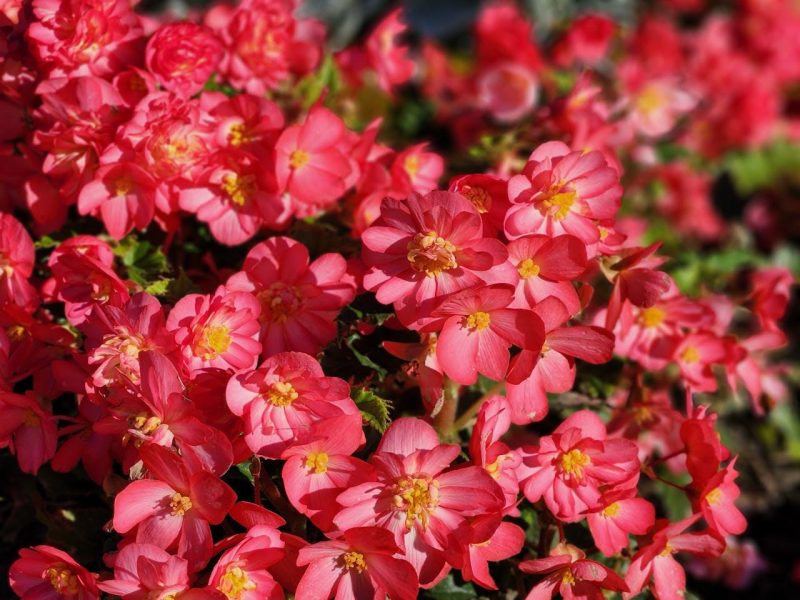
Wax Begonias (Begonia semperflorens) are known for their glossy, waxy leaves and vibrant flowers that can bloom in an array of colors, making them popular among gardeners. Interestingly, the texture of these leaves often leads to rabbits giving them a wide berth.


